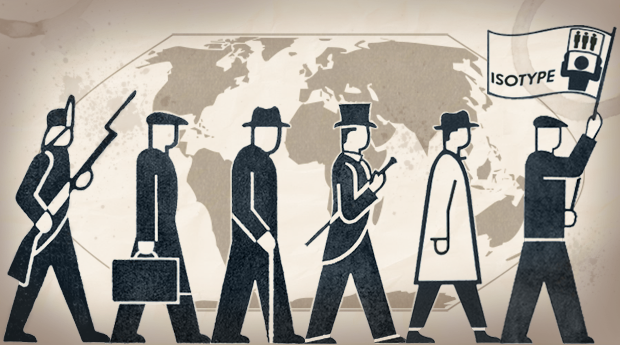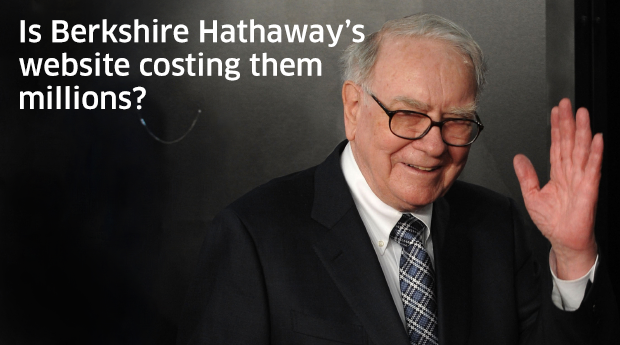Otto Neurath and the Untold History of the Infographic

The common cliché is that a picture is worth a thousand words. However, the worth of an image is still grossly undervalued. A picture has the ability to break down barriers of misunderstanding across languages and cultures, while using universal truths and experiences to help people make connections.
Of course, it's easy to see how a picture could lose its perceived worth. Today we are so inundated with imagery that it seems very commonplace, from skulls to represent poison, to street signs that tell us when there are children at play, to directions on how to put on a floatation device should our plane lose altitude. And of course, there are those wonderful things called infographics, which help break down the loftiest, dustiest, most impenetrable statistics into easy to understand bite-sized chunks. You can’t visit a website, open a magazine or even go the bathroom these days without seeing one.
There are many people throughout history who helped push the use of infographics to be commonplace. Most notable among them is Edward Tufte, whose book, The Visual Display of Quantitative Information, is considered the Bible on the subject. However, Tufte is far from the first to use pretty pictures to make things simple and easy to understand. Way before Edward Tufte mortgaged his home to finance his book on infographics, a polymath by the name of Otto Neurath saw value in images being more than just a pretty picture. He had a vision of using images as a universal language, changing the way we look at statistics and, yes, the restroom… forever.
Criticism and the Creative Mind

We live in a content-driven world.
Not a second goes by where we’re not hammered with Buzzfeed articles and gif sites and blogs and articles. We have access to 300-some cable channels, not including what you can get with a Hulu or Netflix subscription. Then there’s a billion-plus YouTube videos, along with original sketches on sites like CollegeHumor. There’s magazines and books and newspapers – almost all of which are available in digital, on-demand form. There’s theater movies. There’s Red Box rentals. There are apps that give you instant access to nearly any song ever recorded, along with podcasts, interviews, and audio books. There’s traditional radio. Satellite radio. And we haven’t even touched on display ads, billboards, television commercials, or other more interactive marketing experiences.
There’s almost no limit to the scope of the content you can consume at any given moment. So, while it’s become much easier to create content, it has become exponentially more difficult to truly captivate an audience. The number of hours in a day hasn’t changed, just the number of options. Authors aren’t just competing with the other books on the shelf anymore – they’re fighting their ass off to get people to read a book at all, let alone read theirs. It’s effing hard to create content that resonates with people in the digital age. It’s really, really hard.
The Travesty of BerkshireHathaway.com

The internet is a lot like a boomtown. It was built around the resource vein of information, and it was quickly populated with every type of company prospecting for paydirt. As any boomtown, its housing was utilitarian at first: rows of canvas tents and Plain Jane HTML. Companies eventually found that they liked the place and decided to set a spell, improving their websites and creating the internet community we know and love today.
However, within this community there are companies and organizations with what might be considered not so much websites as historic sites. Some of these are kept for posterity (Space Jam); some are just inexplicably bad (us.gov), though you get the feeling that they’ll be renovated eventually as was whitehouse.gov; and some are jealously guarded by old, white-haired, hermit prospectors who refuse to be bought out, still shouting from their porch at passersby. The most heinous of these offenders has to be BerkshireHathaway.com.
Stretch Goals Are Worthless: Why You Need to Stop Asking for More Flair

There’s a famous scene in Office Space where Jennifer Aniston’s character, who works as a waitress at a campy T.G.I. Friday’s knock-off called Chotchkie’s, gets reprimanded by her boss for not wearing enough funny pins on her uniform (which they affectionately call “flair”). But the mandatory minimum is 15 pieces of flair, she protests, and sure enough she’s wearing 15 pieces. But the manager isn’t satisfied. “So, more flair?” she asks. He sighs, disappointed. “If you feel like the bare minimum is enough, then okay.”
Making Your Corporate Character Count

We’ve all seen the cliché image of corporate giving. A huge corporation writes a check to the charity of the week in exchange for some good press and looking a little less evil in the eyes of consumers. Although we’d never admonish anyone for donating money or volunteering his or her time to a worthy cause, this model of corporate responsibility is perfunctory at best. It is the equivalent of getting a little league trophy. You’ve shown up, but you haven’t really earned anything. You’ve done nothing to show your dedication, endurance, skill or strength. You didn’t give your all.
You didn’t do anything to prove your character.
Site Architecture and the Oregon Experiment

In the early 1970s, University of Oregon students and faculty were not happy. Sure, academics have a knack for disgruntlement, but this was a special sort of dissatisfaction: the kind that led to action.
They protested against over-logging, destruction of historic sites, the military draft, American invasion into Asia, and, particularly close to home, the new brutalist style architecture taking over their campus. After enough huffing and puffing, the university administration decided that, while they couldn’t stop all the wrongs in the world, they could take more control of their own facilities. So, they hired Christopher Alexander, a professor from Berkley, to put together a set of guidelines by which the university could conduct its own community planning and building construction—essentially an architectural version of a brand style guide.
What does all of this have to do with designing for digital? A good deal. For websites and applications today are much closer to buildings, or even cities, than they are to say, posters or brochures. Users don’t stand back separate from the visual space on the page, but move through it mentally, all the while envisioning where they are in relation to other areas of the site.